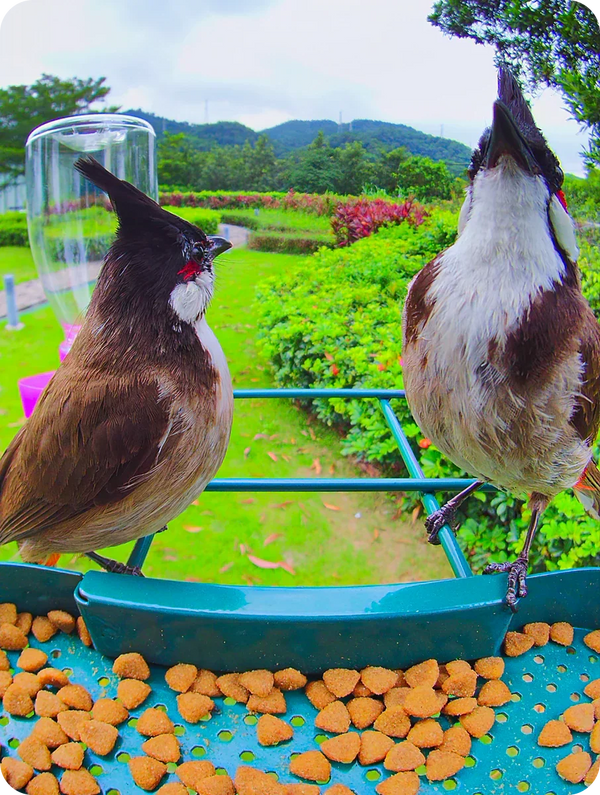Discover the Secret to Attracting Hummingbirds with These Must-Have Feeders!
Hummingbirds are among the most enchanting creatures that grace our gardens with their iridescent feathers and graceful flight. Watching them flit from flower to flower is a delightful experience that many nature lovers cherish. To attract these tiny marvels, having the right hummingbird feeder is crucial. The ideal feeder not only provides a reliable source of nectar but also creates an inviting environment for these birds. In this article, we will explore the best hummingbird feeders available, tailored to meet the preferences and needs of these delightful visitors. From understanding their behaviors to the essential features of an effective feeder, you’ll find everything you need to create a hummingbird haven in your backyard.

Understanding Hummingbird Behavior and Preferences
Hummingbirds are known for their unique feeding habits, primarily relying on nectar from flowers to sustain their high-energy lifestyles. They are naturally drawn to bright colors, particularly red, which is why many feeders incorporate this hue into their design. Understanding their preferences can significantly impact your choice of feeder. For instance, most hummingbirds prefer feeders that mimic natural flowers, offering them an instinctual attraction. Additionally, these birds are territorial and may compete for feeding spots, making it essential to provide multiple feeders if you wish to attract several at once. Observing your local hummingbird species and their feeding patterns can guide you in selecting the best feeder to meet their needs. A friend of mine once set up a feeder filled with homemade nectar and was amazed at how quickly the hummingbirds arrived, drawn in by its vibrant colors and sweet scent.
Key Features to Look for in Hummingbird Feeders
When selecting a hummingbird feeder, several key features can enhance its effectiveness. Firstly, the design should allow for easy access to nectar while preventing bees and other insects from invading. Look for feeders with multiple feeding ports, as this can accommodate several birds at once, reducing territorial disputes. The material is also important; glass feeders are durable and easy to clean, while plastic ones are lightweight and often more affordable. Ensuring that the feeder is easy to disassemble and clean is vital, as nectar can spoil quickly, leading to harmful bacteria buildup. A good feeder should also have a built-in ant moat and a leak-proof design to keep the nectar fresh and prevent messes. My friend who owns a beautiful garden found that her glass feeder not only attracted more birds but was also easier to maintain than her older plastic ones.
Types of Hummingbird Feeders
There are several types of hummingbird feeders to choose from, each with its pros and cons. Tube feeders are popular for their ability to hold a significant amount of nectar and their design that prevents bee access. However, they may require more effort to clean thoroughly. Dish feeders, on the other hand, are easier to clean and refill but may need more frequent maintenance due to their open design, which can attract insects. Window feeders offer a unique opportunity to observe hummingbirds up close, attaching directly to your window. While they are accessible, they tend to hold less nectar and may need more frequent refilling. Ultimately, the best type of feeder depends on your specific needs and the environment in which you plan to use it. A neighbor of mine swears by his tube feeder, stating it has been a reliable source of nectar for hummingbirds throughout the season.
Top Tips for Maintaining Your Hummingbird Feeder
Maintaining your hummingbird feeder is crucial for ensuring the health of visiting birds. Start by cleaning it regularly, ideally every few days, especially in hot weather when nectar can spoil quickly. Use a mixture of hot water and vinegar to clean the feeder thoroughly, avoiding harsh chemicals that can be harmful to birds. When it comes to nectar, a simple mixture of four parts water to one part sugar is effective and easy to prepare. Always allow the nectar to cool before filling the feeder, and avoid adding red dye, which can be harmful. Seasonal maintenance is also essential; as the weather changes, you may need to adjust the feeder’s location or number of feeders to accommodate varying bird populations. A friend who diligently maintains her feeders has observed an increase in hummingbird visits, noting that consistency in cleaning and refilling has paid off in attracting these beautiful creatures.
Enhancing Your Garden with the Right Feeder
In conclusion, attracting hummingbirds to your garden is a rewarding endeavor that requires the right feeders and maintenance practices. Understanding hummingbird behavior and preferences, selecting feeders with essential features, and keeping them well-maintained are all crucial steps in creating a welcoming environment for these fascinating birds. By implementing the tips shared in this article, you can enhance your backyard experience and enjoy the vibrant beauty of hummingbirds throughout the season. Whether you’re a seasoned birdwatcher or a newcomer to the world of hummingbirds, the right feeder can make all the difference in luring these spectacular creatures to your garden.






Comments